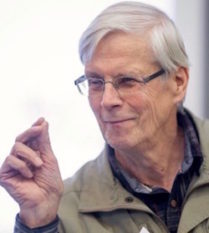 Evolution
Evolution
 Life Sciences
Life Sciences
Evolution a Creative Trickster? Heretic Bioengineer Says No


A headline at Science Daily announces, “Evolution Plays Many Tricks against Large-Scale Bioproduction.” The headline paints evolution as a creative wunderkind, a mischievous Br’er Rabbit brilliantly outsmarting the Br’er Bear of industrial bioproduction.
 There is mischief here, but it’s the vandal kind, not the creative sort.
There is mischief here, but it’s the vandal kind, not the creative sort.
“Ultra-deep DNA sequencing of thousands of cells uncovers many competing mechanisms of evolution as a threat to efficient scale-up of biobased chemicals production,” the article reports. “Evolution plays an underestimated role in bioprocesses and limits yields much more than previously anticipated.”
I passed this along to my Heretic co-author, distinguished Finnish bio-engineer Matti Leisola. When he wrote back, he said the instability of bio-engineered strains in such cases is a well-known problem. He encountered it years ago at Cultor, an international bio-engineering company where he served for several years as a research director before returning to academic life. He said:
We had in Cultor two 350 cubic meter (17 m high) and ten 50 cubic meter reactors. We were at that time the largest producer of glucose isomerase enzyme used by ADM to produce high-fructose corn syrup. The bacterial strain we used had over 100 copies of the needed gene but lost the extra copies during the fermentation process almost completely, and we had to start every new production process with an original freeze-dried engineered strain.
Leisola was underwhelmed by the Science Daily article’s talk of evolution in action:
The story is actually really funny. The word evolution is used to mean degeneration, as is so often done. This is how they describe it: “We discovered that a wide diversity of genetic disruptions turned producing cells into non-producing when we deep-sequenced thousands of production organisms over time.”
That’s a crucial point. Modern evolutionary theory purports to explain how fundamentally new biological machines and other forms originated. But many of the oft-cited examples of evolution in action involve devolution. In each such case, an organism or molecular machine devolves in a way that gives it a niche advantage, but at the cost of overall fitness.
Michael Behe describes some examples in The Edge of Evolution (e.g., antibiotic and malaria resistance). And in this ID the Future conversation, he discusses another example, polar bears. David Klinghoffer summarizes the podcast as a conversation “about evolution’s dark secret: When we can show it at work, in the lab or in the wild, evolution is very often engaged in breaking things, not building them.”
Leisola said there is ample evidence that in competing environments microbes tend to lose unnecessary genes that are only an extra load for them. In a 2014 Bioscience article, “For Microbes, Devolution is Evolution,” writer Marcia Stone describes some of that evidence, and quotes J. Jeffrey Morris, a member of Richard Lenski’s famed Michigan State University lab. “Species are in a ‘race to the bottom,’” Morris said, “deleting the genes for as many costly functions as they can get away with.”
Even when evolution has a small, step-by-step path to a modest complexity advance, that pathway may be foreclosed by a more attractive devolutionary path. Matti and I discuss this in Heretic: One Scientist’s Journey from Darwin to Design:
It is generally assumed that a multi-step mutational evolutionary path is possible if all the intermediary steps are functional and can each be reached by a single mutation. The activity produced in this way may, however, be so weak that the cell must over-express the hypothetical newly formed enzyme — in other words, produce too much of the enzyme, causing a huge strain on the cell because it has to use extra synthetic capacity for this. Therefore it is likely that the cell would shed such a weak side-activity. The modest benefit wouldn’t be worth the strain caused by the overproduction.
Ann Gauger and her colleagues studied what happened in such a case under laboratory conditions. They introduced a mutation that partially interfered with a bacterial cell’s gene for the synthesis of the amino acid tryptophan. Then they introduced a second mutation into the gene that completely abolished the ability to synthesize tryptophan. Cells with the double mutant could, theoretically, regain weak tryptophan synthesizing ability with only one back-mutation. Given more time, cells with the one back-mutation might then undergo one more back-mutation to regain full tryptophan-synthesizing ability. This might demonstrate how a cell could gain a new function with just two mutations. But this did not happen. Instead, cells consistently acquired mutations that reduced expression of the doubly mutated gene. The experiment suggests that even if the cell could acquire a weak new activity by gene mutation, it would get rid of it because weakly performing functions of this sort exact too heavy an energy burden.
There’s more in our new book, available at Amazon.
